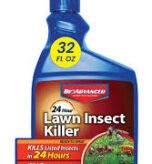Introduction
Prepare to delve into the fascinating world of giant centipede facts, a topic that has intrigued scientists and curious minds alike. Giant centipedes are not just prehistoric relics—they are living, breathing predators with incredible adaptations, potent venom, and significant roles in ecosystems around the globe. In this article, we explore everything you need to know about these remarkable arthropods.
Understanding the Giant Centipede: A Formidable Arthropod
Giant centipedes, primarily members of the Scolopendra genus, are renowned for their imposing size and predatory nature. These invertebrates possess a flattened body, typically comprising 21 segments, each bearing a pair of legs. While the number of legs can vary among species, it’s worth noting that centipedes differ from millipedes, which have two pairs of legs per body segment and do not bite.
Physical Characteristics and Identification
The Amazonian Giant Centipede (Scolopendra gigantea) is the largest centipede species in the world, capable of stretching over 30 centimetres (12 inches). Its reddish-brown to yellowish-brown coloration allows effective camouflage in natural habitats.
Key features include:
- Head and mandibles: Large and powerful for hunting.
- Forcipules (“poison claws”): Modified legs that inject venom to paralyze prey.
- Antennae: Sensitive to touch and vibration, aiding in navigation and prey detection.
Internal link suggestion: Learn more about venomous arthropods in our Venomous Insects and Arachnids Guide.
Global Distribution and Habitats
Giant centipedes inhabit every continent except Antarctica. Key species ranges:
- S. gigantea: Northern South America (Colombia, Venezuela, Brazil) and Caribbean islands like Aruba, Curaçao, Margarita, and Trinidad.
- S. subspinipes: Southeastern Asia, Russia, Malaysia, Indonesia, Australia, Central and South America, and the Caribbean.
Habitats:
- Under logs, rocks, and debris
- Leaf litter and soil
- Decaying wood or cave systems
- Urban areas with moisture
Nocturnal activity and flexible, flat bodies help them avoid dehydration and navigate tight crevices.
Behavior, Diet, and Ecological Significance
Giant centipedes are opportunistic predators. Diet includes:
- Insects, spiders, scorpions, and tarantulas
- Small reptiles (lizards, snakes)
- Amphibians (frogs)
- Small mammals and birds
- Bats (some species climb cave ceilings to hunt)
Prey is captured quickly with mandibles and venomous forcipules, then digested.
Reproduction:
- Males initiate courtship and deposit spermatophores
- Females exhibit parental care, coiling around eggs until hatching
- Lifespan: 5–10 years in the wild
Ecosystem role:
- Control of pest populations
- Nutrient cycling and soil aeration
- Prey for birds, snakes, mammals, and other arthropods
The Potency of Centipede Venom
Centipede venom is highly complex, composed of proteins, peptides, and non-peptidic compounds. Key components include:
- Enzymes: Metalloproteases, serine proteases, chitinases, hyaluronidases
- Non-enzymatic proteins: Ion channel modulators, CAP proteins, transferrin
- Peptides: Disulfide-rich peptides affecting sodium, potassium, and calcium channels
- Non-peptidic compounds: Serotonin and histamine causing sharp pain
Evolution: Venom evolved over 430 million years and even acquired some toxic genes via horizontal gene transfer.
Outbound link suggestion: Centipede venom research – PubMed
Clinical Importance and Human Interactionsz
Stings are extremely painful but rarely fatal:
- Common symptoms: Pain, swelling, redness, itching, minor necrosis
- Rare severe reactions: Anaphylaxis, nausea, dizziness, chest pain, kidney issues
- Documented fatalities are extremely rare.
Potential Therapeutic Applications
Centipede venom has inspired potential medical applications:
- Pain relief: μ-SLPTX-Ssm6a peptide inhibits pain channels more effectively than morphine
- Antimicrobial agents: Scolopins and other peptides combat bacteria and fungi
- Anticancer properties: Scolopendrasin VII inhibits cancer cell proliferation
- Cardiovascular health: CAP proteins improve blood flow and reduce clotting
- Enzyme inhibitors: Potential use in anti-inflammatory therapies
Outbound link suggestion: IUCN Red List – Centipede Species
Image Suggestions (with Alt Attributes)
- Giant centipede hunting undhttps://www.newsweek.com/scolopendra-gigantea-giant-centipede-painful-venomous-bite-1711287er logs – Alt: “Giant centipede facts – Amazonian Scolopendra gigantea hunting”
- Close-up of venomous forcipules – Alt: “Giant centipede facts – venomous forcipules of Scolopendra gigantea”
- Global distribution map – Alt: “Giant centipede facts – worldwide distribution of Scolopendra species”


